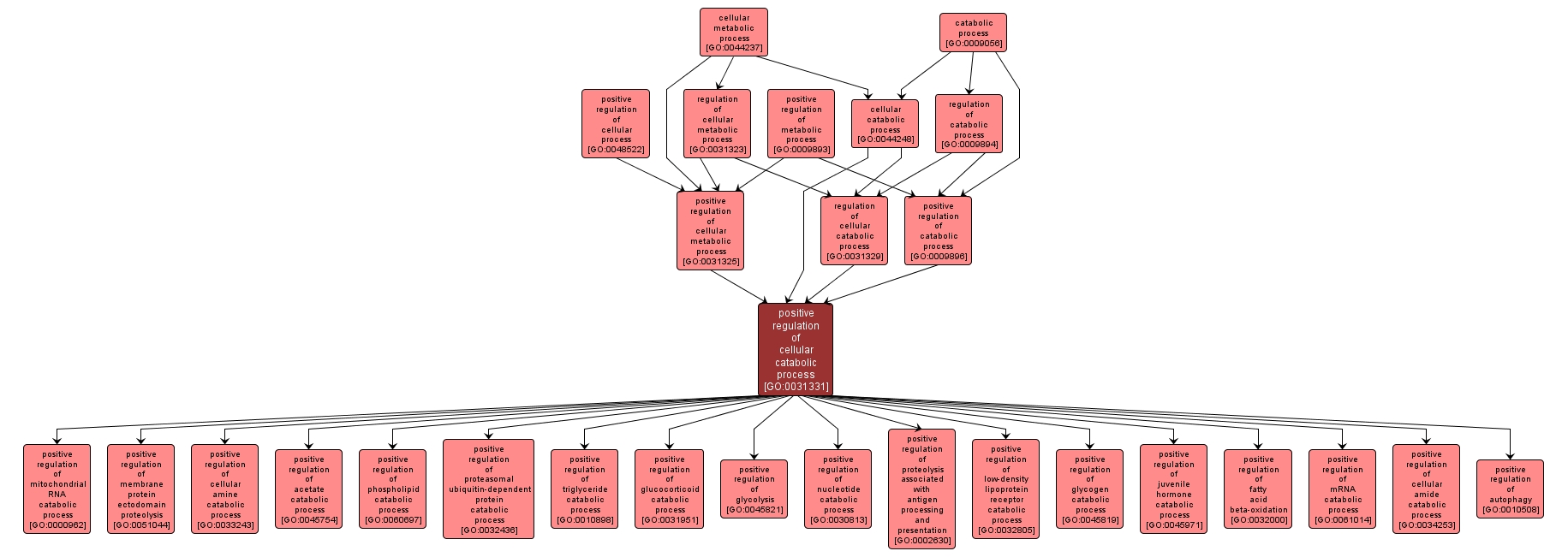GO TERM SUMMARY
|
| Name: |
positive regulation of cellular catabolic process |
| Acc: |
GO:0031331 |
| Aspect: |
Biological Process |
| Desc: |
Any process that activates or increases the frequency, rate or extent of the chemical reactions and pathways resulting in the breakdown of substances, carried out by individual cells. |
Synonyms:
- upregulation of cellular catabolic process
- positive regulation of cellular catabolism
- stimulation of cellular catabolic process
- positive regulation of cellular degradation
- positive regulation of cellular breakdown
- activation of cellular catabolic process
- up regulation of cellular catabolic process
- up-regulation of cellular catabolic process
|
|

|
INTERACTIVE GO GRAPH
|














